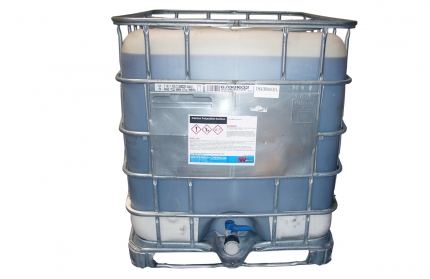Description
calcium polysulfide solution
| Wintersun code: | 03-113 |
| CAS Number: | 1344-81-6 |
| Molecular Formula: | CaSx |
Sales Specification
- Appearance: Green to Dark Color Liquid
- Ferrous Chloride(FeCl2): 18% – 32%
- Fe(II): 8%-14%
Uses
Calcium Polysulfide Solution is a water based line-sulfur solution designed to be used in various treatment systems as a metal precipitationg agent. Soluble toxic metals, such as chromium, lead arsenic, cadmium and copper, as well as other heavy metals, may present a mojor health risk. Geochemical fixation using a chemical reductant such as Calcium Polysulfide converts the soluble toxic metals into insoluble non-toxic compounds.
Calcium Polysulfide Solution is easy to apply and handle in comparison to solid materials- Calcium Polysulfide Solution is a liquid product, which does not need to be dissolved prior to use. When used as a part of a waste treatment program, Calcium Polysulfide effectively stabilizes and reduces soluble metals. Calcium Polysulfide typically forms filterable sulfide sludges upon treatment; an exception is treatment of chromium where hydroxides are formed. Any excess calcium usually precipitates as calcium carbonate or gypsum (calcium sulfate); the extent of effectiveness in treatment is generally a function of the pH of the system.
Treatment Notes:
Arsenic: Acid medium only forms various arsenic sulfides; pH>7; arsenic-sulfur compound are insoluble
Lead: Wide Range (pH: 4-9); forms lead sulfide
Copper: Close to neutral (Optimal pH: 5—7); forms copper sulfide
Zinc: Wide range (pH: 4-9); forms Zinc sulfide
Cadmium: Wide range (pH: 4-9); forms cadmium sulfide
Molybdenum: Wide range (pH: 4-9); forms molybdenum sulfide
Uranium:Wide range (pH: 4-9); forms uranium sulfide
Cyanide: Chemical Conversion produces Thiocyanate*
*Thiocyanate can be bio-treated, or it can be treated with lime, producing calcium carbonate, gypsum and ammonia. Chromium (Cr VI) can be treated with calcium polysulfide, and the Cr(VI) is reduced to Cr (III), which is then precipitated as chromium hydroxide.
While the list above indicates effective treatment may be obtained with system pH near 4.0, TKI has found that product is most stable in systems with pH greater than 5.0, to avoid potential generation of H2S.
Packing
In 2995 LB Tote






